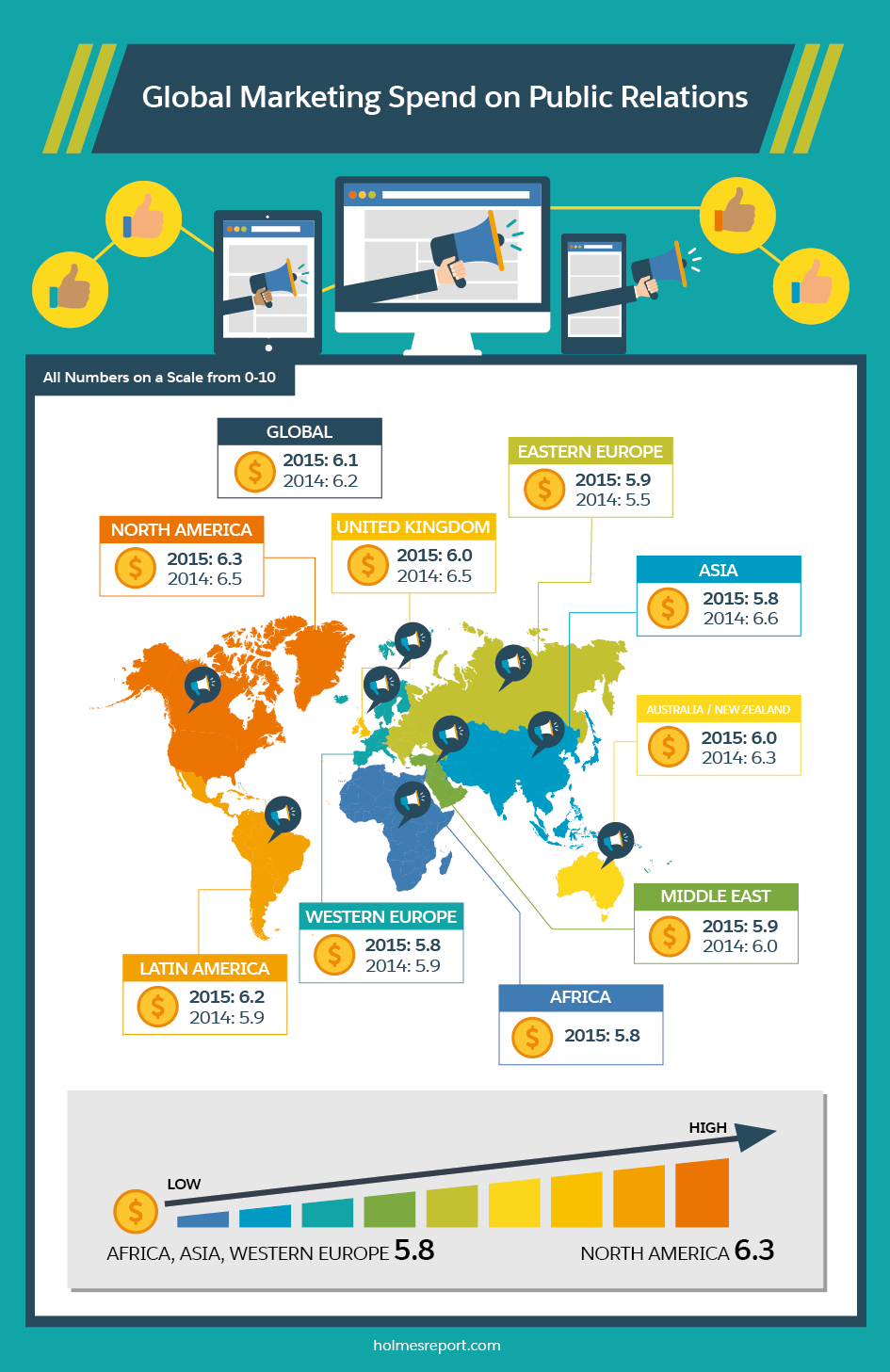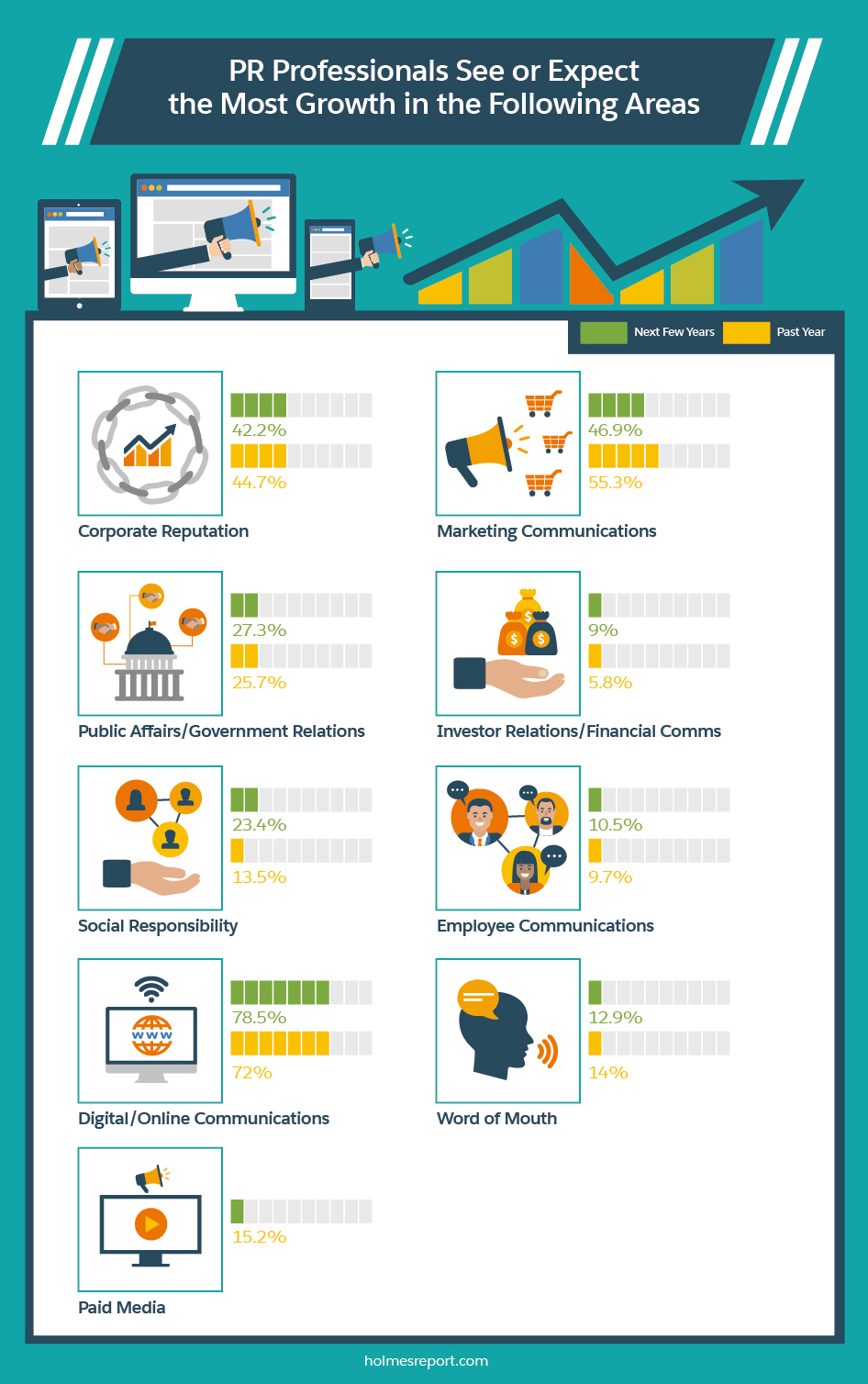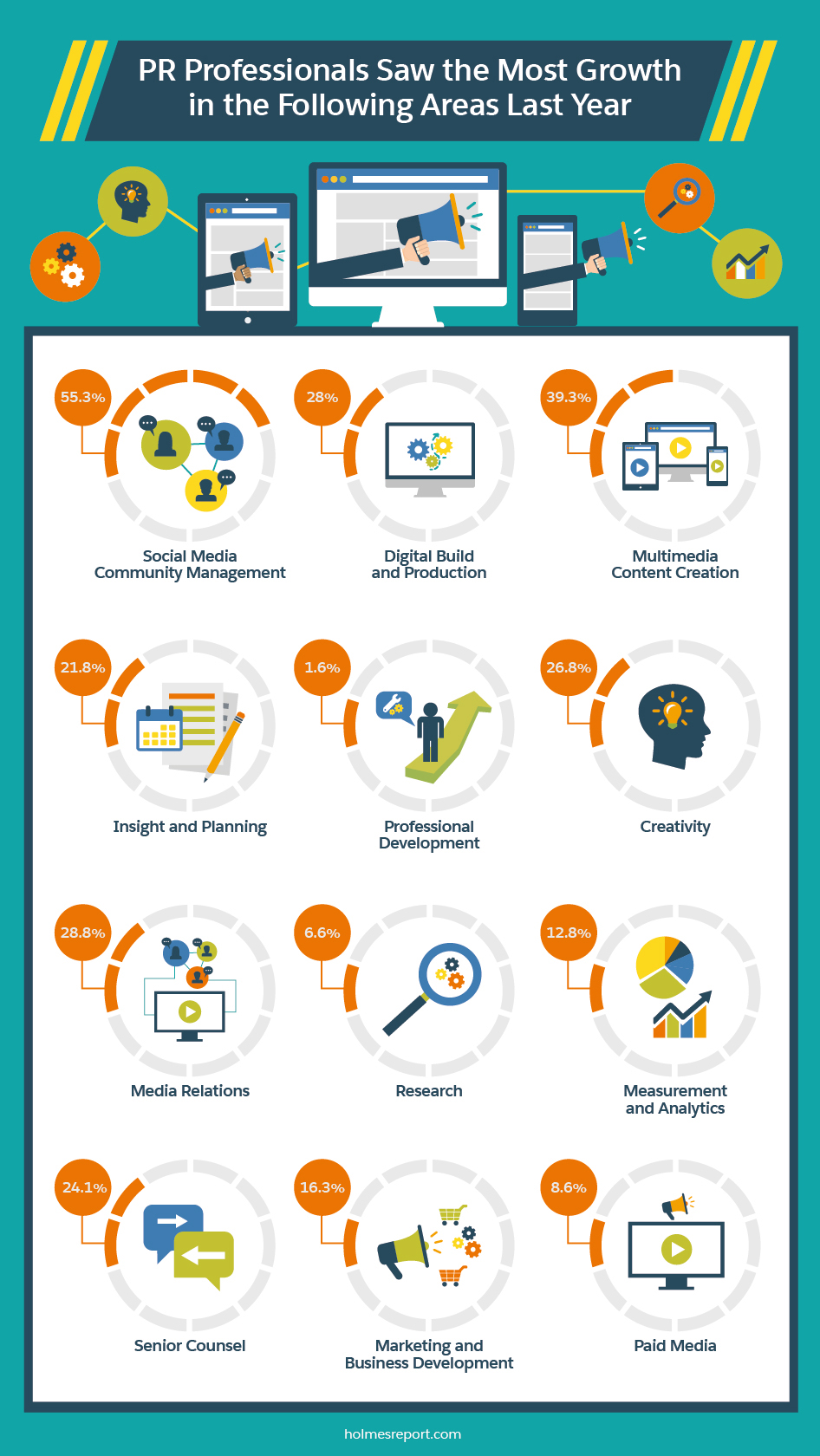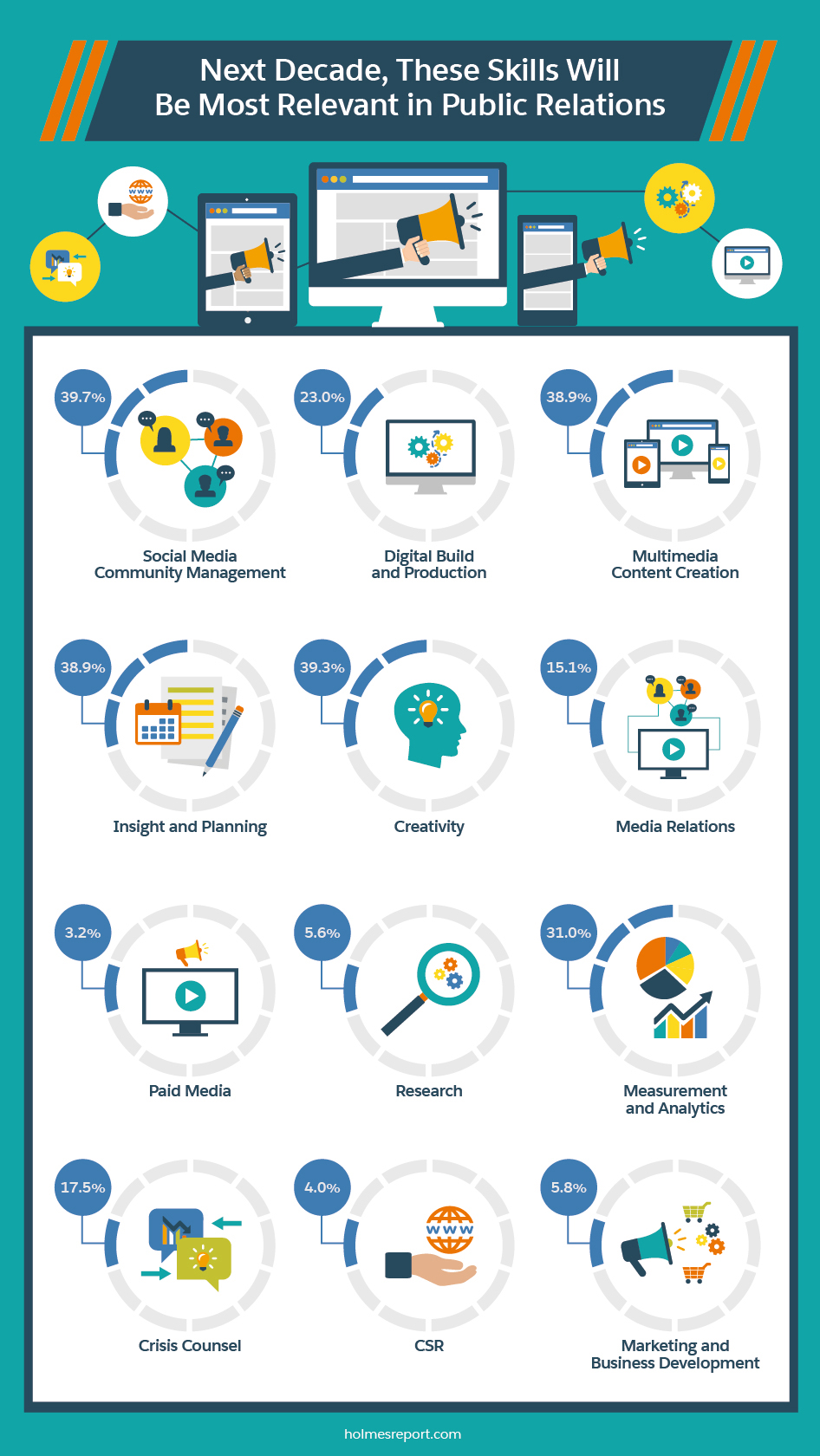As an entrepreneur, you likely spend a lot of time thinking of ways to increase the visibility of your company and your products or services. In a perfect world, you would put your product on billboards from Vancouver to Halifax, pay for commercials to run during the NHL playoffs, and pour money into Google AdWords.
The problem is that your small business is fueled by lots of passion, but not necessarily lots of money. This is where public relations, also known as PR, comes in handy. If you play your PR cards right, you may be able to dramatically increase the visibility of your company with minimal cost.
What is Public Relations?
”If I was down to my last dollar, I would spend it on public relations.” –Bill Gates
Over the past 100 years, public relations has continuously evolved to keep pace with the rapidly changing ways that people discover and disseminate information. For a long time, the idea of public relations hewed closely to this Entrepreneur.com definition: “Using the news or business press to carry positive stories about your company or your products; cultivating a good relationship with local press representatives.”
Today, however, the field of public relations has expanded dramatically to incorporate new sub-fields, including social media and reputation management. Perhaps a better definition comes from Dave Roos, who writes in his article “How Public Relations Works” that “public relations success requires a deep understanding of the interests and concerns of each of the client’s many publics. The public relations professional must know how to effectively address those concerns using the most powerful tool of the PR trade: publicity.”
There is growing agreement that practicing public relations today requires that a PR specialist—or small business owner wearing a PR hat—to focus on engagement and relationship-building through a variety of different channels. This requires a multi-pronged approach that includes the new trifecta of public relations: media, social media and reputation management.
Global Marketing Spend on PR is Higher Relative to Other Marketing Disciplines

How to Develop Your Public Relations Strategy
Before you start composing your press release for The New York Times, you must figure out whether that’s the right target for your business. If it is, what do you want to say to them that is unique and that would be of interest to the publication’s readers? The foundation of any public relations strategy is first the development of your brand voice and a deep understanding of the various “publics,” including media, that you want to reach.
Understand Your Brand
Public relations is all about telling the story of your company, but what is that story? You need to figure that out before you reach out to media outlets or chat with fans on social media. Think carefully about your company’s mission statement and how that relates to your company’s unique “voice.” This voice should be consistent throughout all your marketing channels, including your PR efforts.
PR Starter Tip: Create a Brand Guidelines document. It tells your company’s story, defines your company’s voice, and imbues your company with a unique personality. For examples, check out Uber’s and Texas A&M University’s brand guidelines.
Know Your Publics
The Public Relations Society of America defines public relations as “a strategic communication process that builds mutually beneficial relationships between organizations and their publics.” What are these “publics?” You may assume that your public is your customers, or your target market. Those are certainly important publics, but most companies have a wide array of unique publics. According to David Roos, “A public, in PR terms, is anyone who ever has or ever will form an opinion about the client.”
If you sell organic toothpaste for children, then one of your publics is children who could use your toothpaste. Another public is parents who want to buy their children high quality toothpaste. Yet another public could be dentists who recommend toothpaste brands to parents. But you’re not done yet! Potential business partners, current employees, your suppliers, and anyone who has a stake in the dental industry can all represent valid publics. You may not have the bandwidth to communicate with all of your publics, but just knowing that they exist is an important step in taking control of your company’s image and targeting media outlets.
PR Starter Tip: Create imaginary profiles (personas) of individuals who represent each of your primary publics. Give them a name, a backstory, and a personality. Identify their pain points, their wants, and their dreams. These profiles will give you a clear idea of who are trying to reach when you start planning your PR campaign.
PR Professionals Saw or Expected the Most Growth in the Following Areas

Media Management
Journalists always need fodder for their newspapers, blogs, podcasts, radio shows, television broadcasts, and social media accounts. That need is your golden opportunity for free publicity, but only if you follow PR best practices.
A journalist’s job is not to make your day by writing a gushing review about your product. Instead, you need to pitch a compelling story idea that will entertain, inform, and excite a journalist’s following. When done right, a strong pitch can be a win-win situation for both you and the journalist. You receive free publicity, and the journalist can feed his or her audience an excellent story. Developing a strong PR media campaign takes a lot of grit, but if you put in the time the results can mean a surge in visibility and interest.
Develop a Tailored Media List
You don’t need to immediately go after a feature segment on CTV Morning Live. The democratization of the internet has led to a huge rise in small but highly niche publications that are much easier to break into and begin building your reputation. Start scouring the internet for blogs, podcasts, community forums, and YouTube channels that are directed at your ideal audience. Local news channels and newspapers also make good targets. Your children’s organic toothpaste company can target the plethora of “mommy blogs,” parental community websites, and even the newsletter of the top dental professional association.
Identify Journalists and Editors
Once you have your media list developed, it’s time to identify specific journalists and editors to target. Smaller blogs and podcasts may be written and managed by just one person, but if you target larger publications like O Magazine or the Huffington Post, you’ll want to pitch the person who covers your specific topic. There’s no faster way to be ignored than to pitch the entertainment writer a story about the growing cases of tooth decay in children.
Develop Great Pitches
You can’t go to journalists empty handed. You need a strong story to pitch that relates to your business and will be interesting to their readers.
What trends are you noticing in your industry? Have you recently conducted a survey and found interesting results? Is your company launching a revolutionary product? These could all make great news angles. Write up a short, direct story pitch to send to the journalists on your list. You need to explain why the story idea is perfect for their unique audience and avoid positioning your pitch like an advertisement for your company or product.
As you craft your pitch, answer this question: “Why should this journalist or their readers care?” It’s also a good idea to create a “template pitch” to capture your main pitch points, but be sure to tailor each email, including a personalized introduction. Do not use vague greetings such as “Dear journalist.”
Resources
- LinkedIn: Dmitry Davydov, Chief Marketing Officer at Bitrix24, swears by LinkedIn as a resource for finding and pitching journalists. He writes that “80 per cent of publications about our company were the result of InMail inquires.”
- MuckRake: This company helps you find journalists and bloggers with easy search parameters—for a price.
- Help A Reporter Out: HARO connects journalists with experts and is a great way for you to offer yourself up for quotes, analysis, and expertise. The most basic subscription is free.
- PR Newswire: One of many online press release distribution networks, PR Newswire claims to send press releases to over 5,000 media outlets, as well as to search engines. Pricing depends on how wide you want to cast your net.
- Parody Twitter accounts: While these are tongue-in-cheek at times, the @dearpr and @smugjourno Twitter accounts offer examples of what not to do when reaching out to media with your pitch.
PR Professionals Saw the Most Growth in the Following Areas Last Year

Social Media Management
In many ways, social media has revolutionized public relations by skipping over the role of journalists altogether and allowing you to directly speak to your audience for free (mostly). Once you have cultivated a strong social media audience, you now own the megaphone. If you use that megaphone wisely, your entertaining, witty, emotionally stirring posts can garner exponential visibility through sharing. David Roos explains it like this: “For a company to get its message to an online community, it must join that community. And not as a spectator, but as a passionate participant; a real fan.”
Don’t worry if you can’t tell a Tweet from a Vine. Here’s how to construct your social media plan.
Choose a Few Channels and Be Great at Them
The sheer number of social media channels can feel overwhelming. As a small business, you can't keep them all covered and run your business at the same time. Choose two or three channels that relate best to your primary publics or that you feel comfortable with. For example, your children’s toothpaste company might do well on Facebook, but doesn’t need to be on Reddit. (Here’s a helpful guide to find out which social media platforms would work best for your company.)
Assign a Social Media Specialist
If you would rather be doing anything other than trying to come up with a new tweet, assign someone in your company to be your social media manager. This should be someone who is already familiar with and passionate about social media and who understands the local “rules” of each different social media channel. In the early days of your business, bringing someone in-house may not be possible, but you can hire an agency to provide the social media support you need.
Develop a Social Media Calendar
Is there such thing as social media “poster’s block?” Don’t find out. Rather than waiting for inspiration to strike, create a social media calendar and plan social media campaigns in advance. Look at upcoming big events, cultural holidays, and company news to create compelling, interesting posts around those topics. With enough lead time, you can create cool, shareable, branded graphics and videos.
Engage
Social media is a conversation. Make sure your social media manager encourages participation and checks all of your active social media channels regularly for responses. He also needs to respond to comments and questions, share cool content from followers, and spark interesting conversations.
Resources
Social Studio: This service from Salesforce allows you to direct and manage all of your social media posting from a single dashboard, analyze audience response, and monitor social media mentions.
Additional reading:
- How to Better Engage Your Followers on Social Media
- 3 Psychology Principles That Boost Social Media Engagement
- The Most Important Social Media Metric and Why It Matters
In the Next Decade, These Skills Will Be Most Relevant in Public Relations

Reputation Management
As your media and social media PR efforts get underway, more people should begin talking about your company. Of course, and unfortunately, not everything they say will be positive.
The third leg of the PR tripod is managing your company’s reputation. You can't force people to say nice things about your company. Reputation management means being aware of the conversation your publics are having about your company, helping to steer it in a positive direction, and taking action to gain control of a story before it spirals out of control.
Monitor Your Reputation
Make sure someone in your company is assigned to monitor mentions of your company, products, and the names of your top officers (a task that can be automated with social media listening and tracking in your marketing platform). This person needs to check review sites (if relevant to your business) such as Yelp, Angie’s List, and Google, along with blogs and social media, at least once a day to keep on top of the chatter and catch news before it breaks.
Engage When Appropriate
It is often useful to engage criticism right away instead of leaving it to fester. Most of the time, an angry customer just wants to be heard and understood. "Being real and transparent in apologizing can go far toward diffusing a situation and moving the process along toward reconciliation," says Chris Silver Smith on Search Engine Land.
On the other hand, don’t be shy about sharing praise. Thank someone for a positive review, retweet, and share. Fans love when companies take notice of their posts.
Resist Making Things Worse
Your business is your lifeblood, and sometimes customers or internet trolls can be unfair or downright disingenuous in attacking your business—or even you personally. Just because they favor low blows doesn't mean you should sink to their level. Do not attack customers or let your emotions overwhelm you, or you'll just make the situation worse. "No one can damage you as seriously as you can damage yourself if you don't know what you're doing," warns Silver Smith.
Create a Crisis Management Plan
The only thing worse than facing a scenario like a product recall, customer lawsuit, or an embarrassing revelation about a top executive is to be completely unprepared when it happens. Even a small business should create a crisis management plan, which identifies potential crisis areas.
For example, what happens if you have to issue a recall on a batch of your toothpaste? Figure out how you would address each potential situation. Assign your employees crisis management roles, and write down clear procedures.
Resources
- Google Alerts: This free service lets you receive immediate or daily updates whenever a specified term is mentioned. All businesses should set up Google Alerts for their product names, company name, and the names of their company’s top officers. Don’t forget to include common misspellings and the competition.
- Social Media Listening Tools: Google Alerts don’t usually pick up social media mentions. To monitor social media mentions, make sure your marketing or social media management tool offers listening options so you know as soon as your chosen terms are mentioned on major platforms.
A Great Public Relations Campaign Isn’t Built in a Day
This is a lot of information to absorb, but if you were afraid of rolling up your sleeves and putting in the hard work, you would have never become a small business owner in the first place. You don’t have to build your public relations campaign in a day. Bookmark this article and then slowly work your way through the steps.
Start by creating your branding document and the profiles of each of your major publics. Then dedicate an hour each day to building up your media list, brainstorming story angels, and pitching journalists. If you can, assign your social media to the most socially savvy person in your company. Finally, set up your Google Alerts so you can monitor the conversation the public is having about your company.
Each action will bring you a step closer to gaining more visibility for your company, developing stronger relationships with your publics, and steering the public conversation about your company in the right direction. In no time at all, your company will be popping up all over the web. Your competition will be scratching their heads, wondering how you could afford such a great PR team!
Share "The Small Business Introduction to Public Relations" On Your Site



 >
>
